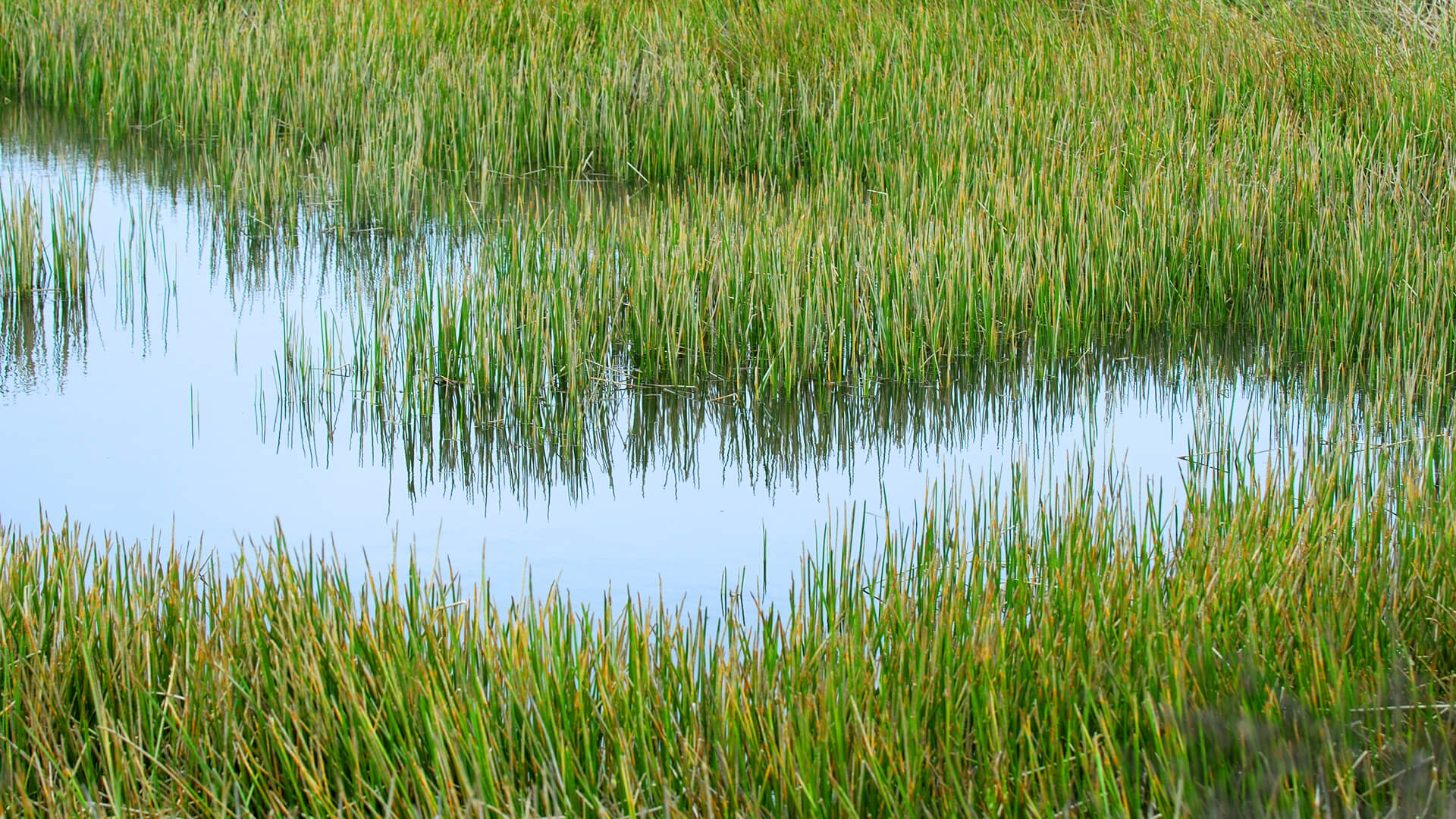Ground preparation
A brief guide for the installation of reed bed membranes and Pipework connections.
The reed bed installation should be carried out on a suitable sub-base as set out in the Method Statement. The area for lining should be clean, dry, free from sharps and anything that could protrude through the liner. The sides of the reed bed should be battered back smoothly, and the base area covered with a sand blinding to a minimum of 50mm cover. Around all pipe penetrations the pipe must extend a minimum of 500mm to allow for correct sealing using the correct sized top-hat.
Liner Installation
(Using an Impermeable Membrane and a Geotextile protection layer)
Once satisfied with the area preparation a 300g Geotextile will be rolled into place. It is good practice to do the base area first, followed by the sides. The Geotextile must be overlapped by 200mm and tacked into place using a hot air gun, this will stop the Geotextile moving during the unrolling of the membrane.
The Reed bed liner should be positioned on the excavation as per the unfolding instructions which will be drawn on the liner. Roll out the membrane and unfold until the entire area is covered, taking care to remove any excess folds or creases.
Pipe Penetrations
Around pipe penetrations, the membrane must be cut so the liner lays flat over the pipework. The top-hat sections can then be place over, checked for a correct fit and marked ready for welding. With the membrane and top-hats marked, pull the liner back onto the flat area sealing the top-hats to the membrane using double-sided tape with a 50mm hot air welded seam. The liner can be put back into place along with the top-hats. These are sealed to the pipe work using 150mm wide single-sided tape, ensuring that 75mm is on the sleeve and 75mm is on the pipework respectively. Jubilee clips will be used to create a further seal, two per pipe penetration. Final checks shall be made to the area to ensure everything is sealed.
Protection layer
The corners of the reed bed should be folded in with one neat fold that follows the contour of the battered edges. A final layer of
Geotextile can be used to cover the membrane, again allowing for a 200mm overlap and tacked into place to stop shift during the
aggregate back fill.
Quality assurance
During the entire work process photographs must be taken, and a seam weld quality assurance form will be completed for all welds and joints.


